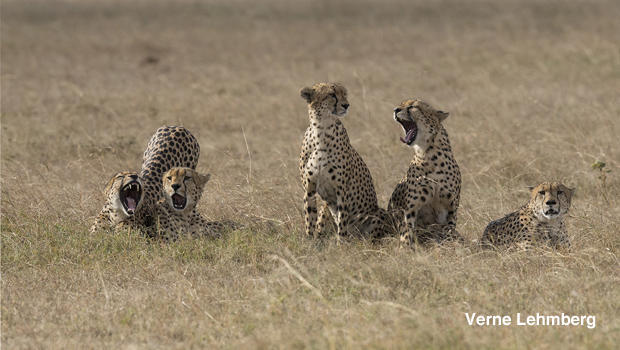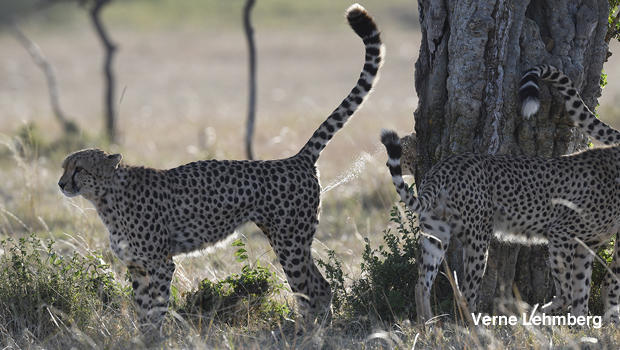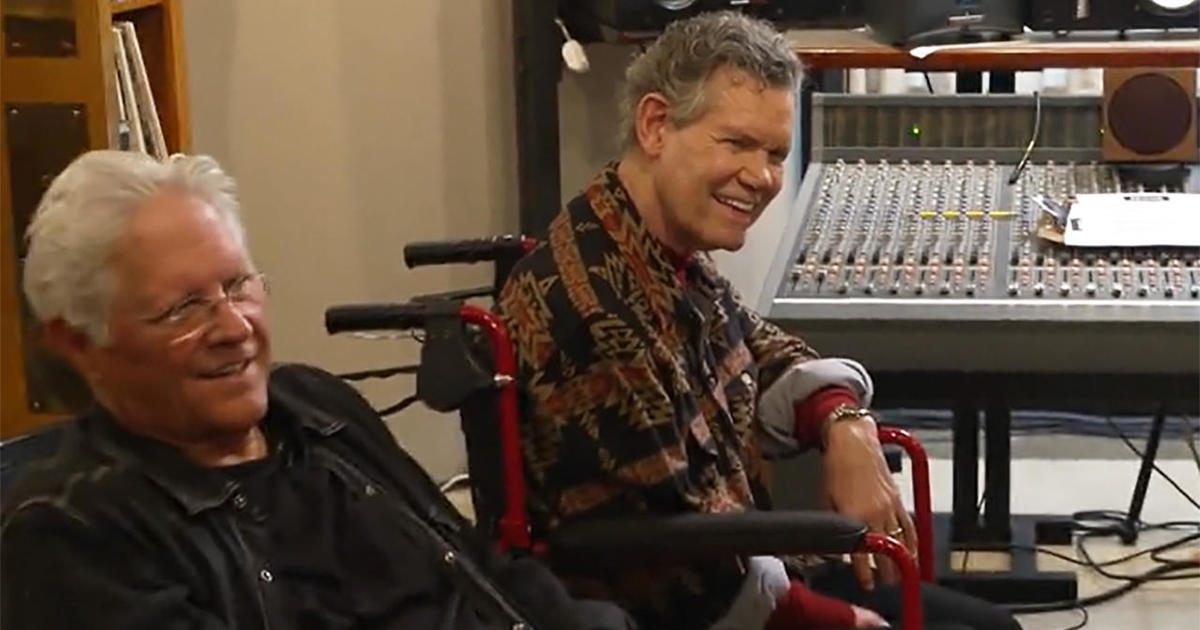Nature up close: A coalition of the killing
Follow along as "Sunday Morning" contributing videographer Judy Lehmberg reports on her two-month trip to Kruger National Park in South Africa and to Kenya's Maasai Mara.
I've spent my life watching wildlife but have seen very few actual kills. At first glance it may seem strange I haven't seen more, considering how much time I've spent in wild places. (Spending most of my summers fly fishing accounts for some of that.) And I spend a lot of time watching both black and grizzly bears, who – although they are carnivores – are usually catching and eating plants (although I have seen both species catch and eat baby elk, and have seen bears and wolves on carcasses they have killed).
The catching and killing part is trickier though, for several reasons: One, predators haven't been allowed to live in as many places as they used to in today's human dominated world; two, there are only a very small percentage of animals in any sustainable ecosystem that are predators. An area that can sustain 1,000,000 wildebeest can only sustain several hundred lions; and three, most kills happen quickly.
All of the above factors made what we saw our very first afternoon in Kenya's Maasai Mara just that much more unexpectedly amazing. Our guide told us a rare coalition of five male cheetahs had formed: two sets of two brothers, plus one lone male cheetah were hunting together to increase their success rate, enabling them to bring down larger prey and to more successfully fend off hyaenas. He didn't think they would hang around long, so he wanted try to find them. We readily agreed.
We found them lounging under a large umbrella acacia, those flat-topped trees so common in East Africa. They were definitely an impressive bunch, but they weren't doing much. After about 15 minutes one of the boys got up and started walking towards another tree, then one by one the others started to play follow the leader. When they got to the second tree, some of them stood on their hind legs and scratched the tree with their front claws, while others rubbed their faces against the tree and then scent-marked it. They were claiming territory.
Then they continued walking, this time towards a herd of wildebeest. We didn't think they were going to hunt because they weren't being sneaky – they were just walking. Then they stopped and watched for a long time, walked some more, then stopped and watched again. This went on for about 20 minutes while we hoped they really were going to hunt.
Yes, they were. No, they weren't. Well, maybe.
Then they started to sneak, moving low and slowly towards the wildebeest who did not see them in the tall cheetah-colored grass. Suddenly, one of the larger males began running towards the wildebeest. He didn't appear to have picked out an individual, though maybe he did and I just didn't realize it. Within seconds he pounced on a full-grown male wildebeest, and the rest of the cheetah group followed suit.
Although all of the male cheetahs are about five years old, two of them (the brothers) are slightly larger, and it was quickly evident they were not only effective hunters but killers as well. Still, the actual killing took almost 15 minutes, partly because the animal was a large strong male, and partly because several of the cheetahs were pretty useless.
The brothers had the wildebeest down several times, but each time it got back up and continued trying to escape. Eventually the cheetah holding the wildebeest by the neck and the others biting him on the shoulders and flanks wore him down and he did not get up again. It was obvious the cheetahs were exhausted, especially the one hanging on its neck the entire time. Their breathing was very deep and rapid as they began to quickly eat, knowing they were far from the largest predators around. It was extremely difficult to watch, but it was also one of the most thrilling experiences I've ever had. I felt honored to watch those magnificent animals doing what they were designed to do.
Almost before the wildebeest was dead, the vultures and hyaenas began to arrive, the latter probably attracted by the wildebeest's cries.
Eventually four hyaenas arrived, three that obviously knew each other and one stranger who kept its distance from the others. They charged the cheetahs several times but were either totally ignored or one of the cheetah coalition chased them a short distance away.
It was evident the hyaenas knew the cheetahs would eat their fill and still leave enough for them. By sunset they were all full and the hyaenas moved in. Our guide assured us the carcass would be totally gone by 8:00 p.m.
Nothing is wasted in our natural world.
To watch Judy Lehmberg's video click on the player below. Warning: Graphic content.
A side note: About 10,000 years ago some event, maybe a disease, wiped out the majority of cheetahs on Earth. The ones that live in Africa today have not recovered genetically from that devastating "bottleneck effect" that radically reduced their population. As a result, a cheetah in a North American zoo is about as closely related to a cheetah in Kenya as it is to one in Botswana or Namibia – a fact worrisome to cheetah biologists, who fear that if a disease came along that killed some cheetahs it could potentially wipe out the entire species.
One positive sign is that female cheetahs were recently found to be more promiscuous than originally thought, when it was discovered through DNA research that a female cheetah's cubs were often fathered by different dads. Although their numbers are still declining drastically, there is hope they can survive in the national parks of sub-Saharan Africa.
See also:
- Travel tips to Kruger
- One huge crocodile
- A surprise leopard or two
- The overlooked species
- Decisions, decisions ... lions or elephants?
- Back to Africa
- Kruger National Park feeding frenzy
- Buffalo 1, Lions 0
Judy Lehmberg is a former college biology teacher who now shoots nature videos.
For more info:
- Judy Lehmberg (Official site)
- Judy Lehmberg's YouTube Channel
To watch extended "Sunday Morning" Nature videos click here!







